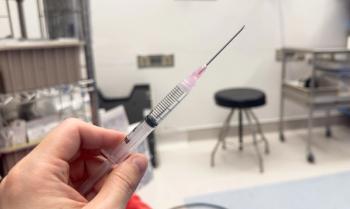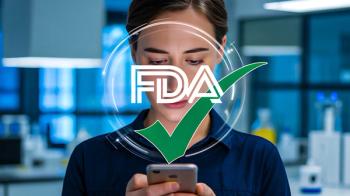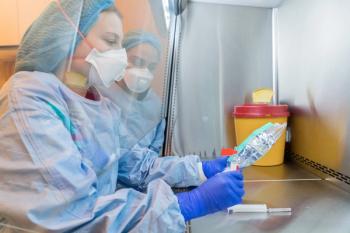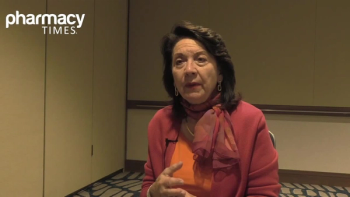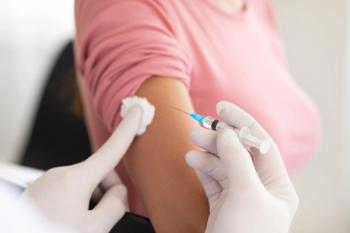
Dapagliflozin Significantly Reduced A1C in Children, Adolescents With Type 2 Diabetes
Investigators found that the adjusted mean change in A1C was –0.62% for dapagliflozin compared to 0.41% for a placebo in patients with type 2 diabetes.
Dapagliflozin (Forxiga; AstraZeneca) demonstrated a significant reduction in A1C for children and adolescents with
“The significant decrease in A1C that we observed in patients receiving [dapagliflozin] may indicate a reduction in the progression of disease and its complications. This is an important treatment consideration as children and adolescents with [T2D] often experience earlier onset of complications and faster advancement of disease compared to adults with the same condition,” Naim Shehadeh, a professor of Endocrinology at Rambam Health Care Campus in Israel, said in a statement.1
T2NOW was a randomized, double-blinded, placebo-controlled study evaluating the efficacy and safety of dapagliflozin as an add-on treatment for children and adolescents with T2D who were receiving metformin, insulin, or both. In the study, investigators randomized individuals to received dapagliflozin, saxagliptin (Onglyza; AstraZeneca), or the placebo. Those who received an active drug and had an A1C at 7% or greater at 12 weeks were randomized further to either continue the current dose or up-titrate to a higher dose of the same treatment.1,2
The primary endpoint was change in A1C after 26 weeks compared with the placebo for dapagliflozin, in the 5 or 10 mg strength, compared to saxagliptin, in the 2.5 mg or 5 mg strength. The secondary endpoint included the change in fasting plasma glucose and the proportion of individuals who achieved an A1C of less than 7% after the 26 weeks.1
Investigators found that the adjusted mean change in A1C was –0.62% for dapagliflozin compared to 0.41% for the placebo. The difference was –1.03 percentage points for dapagliflozin compared to the placebo and –0.44 percentage points for saxagliptin compared to the placebo.2 The study’s primary endpoint was achieved as well as all secondary endpoints, with dapagliflozin providing clinically meaningful improvements in glycemia at week 26 compared to the placebo.1
The safety was assessed over 52 weeks, with investigators noting that the safety profile for this patient population was consistent with those in adults with T2D.1,2 Adverse events (AEs) occurred in 72.8% of those receiving dapagliflozin, 69.3% for saxagliptin, and 71.1% for the placebo.
Serious AEs occurred at 8.6%, 8%, and 6.6%, respectively. The most common AE was headache over the 52-week period. Most events were mild, with none resulting in discontinuation.2
“Today’s results from one of the largest studies into children suffering from [T2D], offers hope. Despite the growing global burden of [T2D] among children and adolescents, the treatment options available are currently limited. It is well documented that some patients find injectable therapies challenging, making the need for effective oral treatment alternatives paramount,” Rudd Dobber, the executive vice president of the Bio Pharmaceuticals Business Unit at AstraZeneca, said in the statement.1
The results were presented at the 59th Annual Meeting of the European Association for the Study of Diabetes Congress and published in The New England Journal of Medicine Evidence.1
References
- Forxiga met primary endpoint in T2NOW phase III trial, one of the largest pediatric type 2 diabetes studies performed to date. News release. AstraZeneca. October 4, 2023. Accessed October 4, 2023. https://www.astrazeneca.com/media-centre/press-releases/2023/forxiga-met-primary-endpoint-in-t2now-phase-iii-trial-one-of-the-largest-paediatric-type-2-diabetes-studies-performed-to-date.html#
- Shehadeh N, Barrett T, Galassetti P, Karlsson C, Monyak J, Iqbal N, Tamborlane WV; T2NOW Study Group. Dapagliflozin or saxagliptin in pediatric type 2 diabetes. N Engl J Med. 2023;389(14):1319-1330. doi:10.1056/NEJMoa2209856
Newsletter
Stay informed on drug updates, treatment guidelines, and pharmacy practice trends—subscribe to Pharmacy Times for weekly clinical insights.

